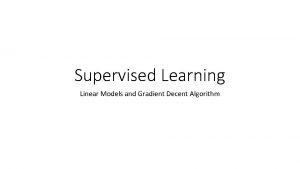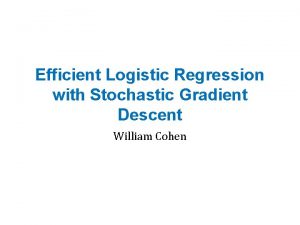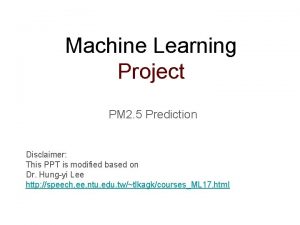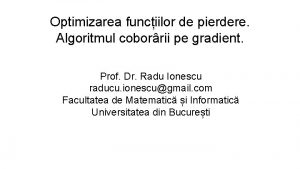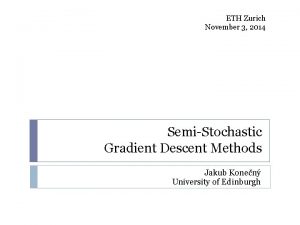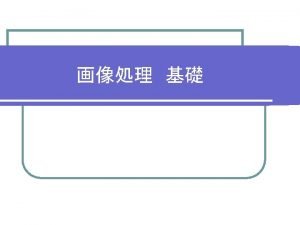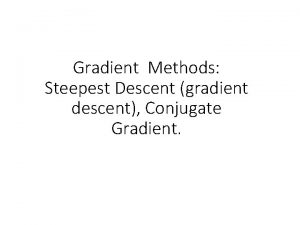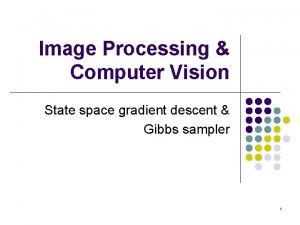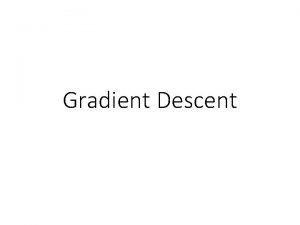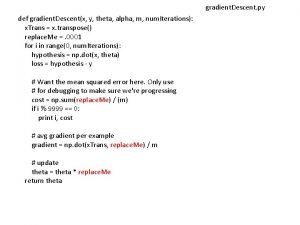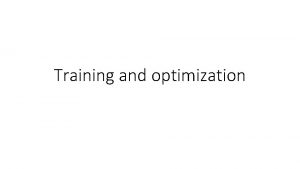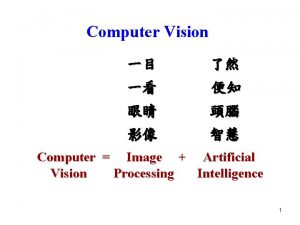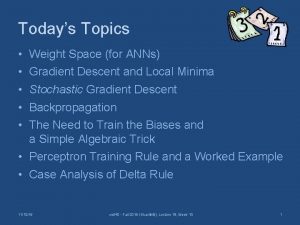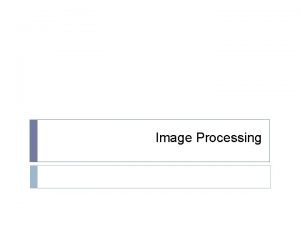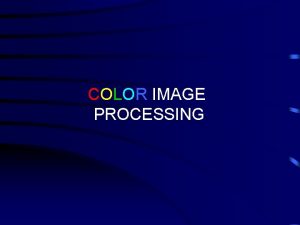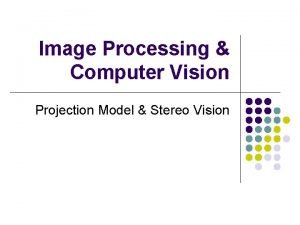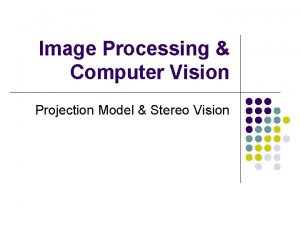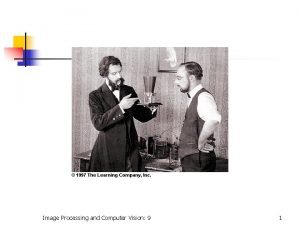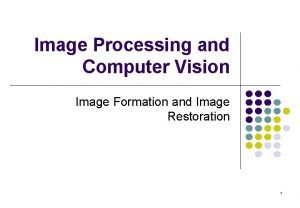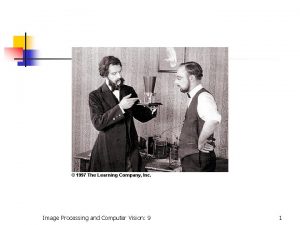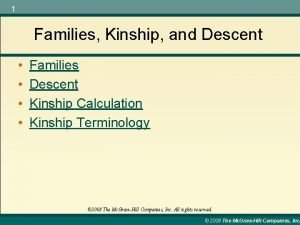Image Processing Computer Vision State space gradient descent





















- Slides: 21

Image Processing & Computer Vision State space gradient descent & Gibbs sampler 1



State space gradient descent E = xy[(Fxy – Ixy)2 + (Fx+1, y – Fxy)2 + (Fx, y+1 – Fxy)2] Algorithm Initial F 0(x, y) = Random 0…. 255 For each pixel x, y For each possible state S if F(x, y) = 0, E 0 = ………… Noise 50% if F(x, y) = 1, E 1 = …………. . . if F(x, y) = 255, E 255 = ………. . Select state with minimum E Let’s F(x, y) = S Repeat until no change in E Restore 4

State space gradient descent E = xy [(Fxy – Ixy)2 + (Fx+1, y – Fxy)2 + (Fx, y+1 – Fxy)2] Data Constraint Smoothness Constraint F(x, y) ��������� update ���������� Random ������� Random E ��� Energy ����������� 0 - 255 Ixy ��� Image Intensity ����� weight ������� (Neighbor) 5


Energy (Global Energy) ���������� 3 ��� (x+1, y) (x+1, y+1) (x, y+1 E = xy [(Fxy – Ixy)2 + (Fx+1, y – Fxy)2 + (Fx+1, y+1 – Fxy)2 + (Fx, y+1 – Fxy)2] 7

State space gradient descent ��������G �������������� Energy ��� local minimum ���� Global minimum �������� 8

Gradient descent Algorithm 1. 2. 3. Initial F 0(x, y) = Random 0… 255 For each Pixel(x, y For each state S = 0… 255 if F(x, y) = 0, E 0 = ……. if F(x, y) = 1, E 1 = ……. ………. if F(x, y) = 255, E 255 = ……. Choose state with minimum E F(x, y) = S Repeat step 2 until E is stable (not decrease) 9

Example (state space gradient) 0 1 2 3 4 0 0 0 1 1 2 2 3 3 4 4 F(x, y) 1 2 3 4 I(x, y) E = xy [(Fxy – Ixy)2 + (Fx+1, y – Fxy)2 + (Fx, y+1 – Fxy)2] Data Constraint Smoothness Constraint 10


Gibbs Sampler 1. Start temperature T is high 2. Initial F 0(x, y) = Random 0… 255 3. For each Pixel(x, y) For each state S = 0… 255 if F(x, y) = 0; E 0 = …. . ; Prob 0=…. if F(x, y) = 1; E 1 = …. . ; Prob 1=…. …………. if F(x, y) = 255; E 255 = …. . ; Prob 255= For each Probi = Pi / sum(Pi) 4. Sample for state S from pdf Probi F(x, y) = S 5. Reduce T = T * 0. 9 6. Repeat step 3 -4 until E is stable 12





Gibbs Sampler ���� 3 state 0, 1, 2 P 0=exp(-2/T) P 1=exp(-3/T) P 2=exp(-4/T) 0. 1 17

Example (gibbs sampler) 0 1 2 3 4 0 0 0 1 1 2 2 3 3 4 4 F(x, y) 1 2 3 4 I(x, y) E = xy [(Fxy – Ixy)2 + (Fx+1, y – Fxy)2 + (Fx, y+1 – Fxy)2] Data Constraint Smoothness Constraint 18



Noise removal with missing data E = xy [(Fxy – Ixy)2 Axy+ (Fx+1, y – Fxy)2 + (Fx, y+1 – Fxy)2] Axy ���� 0 ��� no data ���� 1 ��� has data 21
 Computer vision vs image processing
Computer vision vs image processing Gradient descent equation
Gradient descent equation Gradient descent multiple variables
Gradient descent multiple variables Logistic regression stochastic gradient descent
Logistic regression stochastic gradient descent Linear regression gradient descent
Linear regression gradient descent Batch gradient descent
Batch gradient descent Stochastic gradient descent
Stochastic gradient descent Batch gradient descent
Batch gradient descent Gradient descent python implementation
Gradient descent python implementation Gradient descent rule
Gradient descent rule Pixel pix
Pixel pix Human vision vs computer vision
Human vision vs computer vision Unsharp masking matlab
Unsharp masking matlab Point processing in image processing example
Point processing in image processing example Histogram processing in digital image processing
Histogram processing in digital image processing Laplacian filter
Laplacian filter Point processing in image processing
Point processing in image processing Morphological
Morphological Image transform in digital image processing
Image transform in digital image processing What is image restoration in digital image processing
What is image restoration in digital image processing Spatial and temporal redundancy in digital image processing
Spatial and temporal redundancy in digital image processing Image segmentation in digital image processing
Image segmentation in digital image processing

